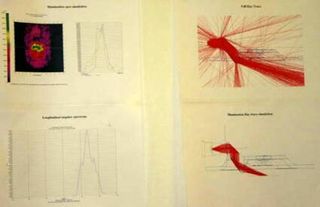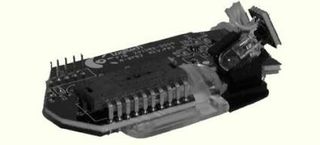Logitech New Mouse Range Goes Back to the Future
But How Does It Work?
Before showing you the laboratories, let's begin with a brief reminder of what optical mouse technology is all about. An oblique, red luminous beam illuminates the surface beneath the mouse. The mouse takes shots of the lit surface and compares them with each other to determine its coordinates. To do this, the beam of light captures an image of the surface's features. By superimposing the shots, their differences can be analyzed. Several factors intervene to guarantee precision and responsiveness. In fact, logically, the coordinates need to be as accurate as possible and the movement made by the hand should not falsify the measurements. Above all, the surface must be illuminated as well as possible. To do this, the beam of light is studied in the optical laboratory as it touches the surface in order to optimize the lens that focuses the light.

A Tiny Camera
The first parameter to be measured is the quality of the shot. The better it is, the easier it will be to measure. Just like a camera, the size of the sensor, its quality and that of the optics will determine the result. The only objective measurement lies in the size. As for the rest, only the result is telling. The standard MX sensor using CMOS technology consists of 30 x 30 pixels, which means it is very big. The standard size of the other sensors is around 15 x 15 pixels. By far the vast majority of sensors on the planet are manufactured by Agilent Technologies. Logitech works jointly with Agilent to develop sensors that are used exclusively by Logitech itself. After that, the sensors can be purchased and incorporated into the products of other manufacturers.

This is the sensor for a series MX mouse
We were happy with the reliability of these values until an outsider stepped in and upset the apple cart. The Razer Viper , with its 16 x 16 sensor, has a precision at least equal to that of the Logitech mouse. Razer's engineers explain that it is the quality of the lenses, or of the optics, that is the determining factor. So here we are with a parameter that no one mentioned previously. We know that everyone uses the same optics. After all, it's the result that counts.
Stay on the Cutting Edge
Join the experts who read Tom's Hardware for the inside track on enthusiast PC tech news — and have for over 25 years. We'll send breaking news and in-depth reviews of CPUs, GPUs, AI, maker hardware and more straight to your inbox.
Current page: But How Does It Work?
Prev Page The Secrets Of The Powers That Be Next Page A Tiny Camera, ContinuedMost Popular

